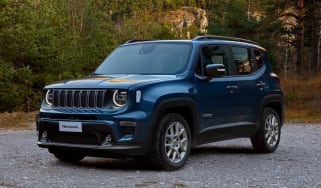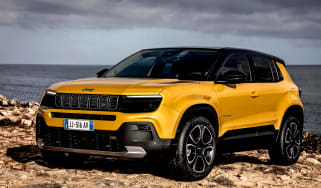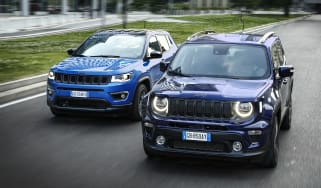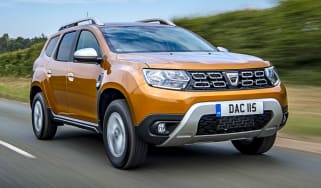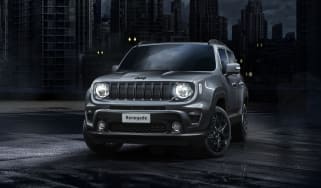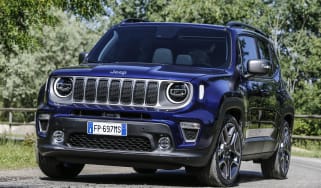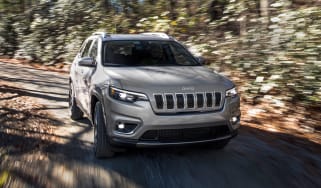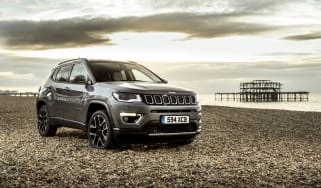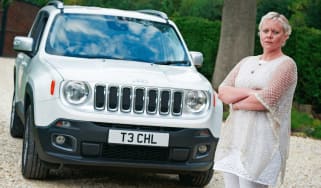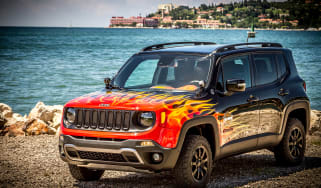Jeep Renegade SUV
"The Jeep Renegade stands out from the crowd with its chunky looks and excellent off-road performance"
Pros
- Exceptional off-road
- Spacious inside
- Unique looks
Cons
- Noisy at speed
- Three-star safety rating
- Higher-spec models are pricey
Verdict - Is the Jeep Renegade a good car?
Jeep is known for its large and luxurious SUVs and is famously associated with the Willys Jeep of the Second World War. Hints of that model exist in today’s Jeep Wrangler, a compact, utilitarian off-roader for style-conscious adventurers. However, they also surface in the Renegade, a smaller, more urban-friendly SUV whose rivals include a broad range of models such as the Fiat 500X (which it shares a platform and engines with), the Nissan Juke, Renault Captur and Vauxhall Mokka. The Renegade is starting to show its age, but new mild-hybrid and plug-in hybrid powertrains help keep running costs down.
Jeep Renegade models, specs and alternatives
The Renegade’s urban-friendly nature is felt in a driving experience that’s safe and predictable. Despite its tall profile, it resists leaning too much in corners and grips strongly. Anyone considering it over a conventional hatchback will find it's a confidence-inspiring SUV, if a little vague and uninvolving. Thanks to its Jeep heritage, it's also the most off-road focused crossover on sale.
But the biggest news was the introduction of new, smaller and more efficient petrol engines, kicking off with a 1.0-litre with 118bhp – since discontinued. This was followed by a 1.3-litre offering 148bhp, replacing the 1.4-litre found in the pre-facelift model. This version provided enough power to get from 0-62mph in 9.4 seconds, as well as returning similar economy to the 1.0-litre engine.
From early 2020, the 1.3-litre engine was made available with 178bhp but this has now been discontinued. A plug-in hybrid Renegade 4xe model is also available, using the same petrol engine, plus an electric motor and a battery. This was the first plug-in hybrid powertrain fitted in a Jeep model, and can power the Renegade 4xe for up to 25 miles on electricity alone, which boosts efficiency figures dramatically.
Jeep heavily reduced the number of diesels available in 2021 and has now discontinued them altogether. Previously, you could buy a 118bhp 1.6-litre or a 2.0-litre with either 138 or 168bhp but now the choice is limited to petrol or plug-in. The last example was only offered on top-spec Trailhawk models, so was an expensive choice, which came as standard with four-wheel-drive - like the most powerful petrol engine.
In common with most small SUVs, four-wheel drive isn’t standard on the Renegade – in the current lineup it comes only with the plug-in hybrid version. The lack of four-wheel drive isn't necessarily a problem, though, since most owners will rarely venture off-road and in any case, the smaller-engined, two-wheel-drive models are more economical.
Jeep quotes up to 41.3mpg for its 1.5-litre mild-hybrid petrol engine. The downsized petrols are claimed to be up to 20% more fuel-efficient than their predecessors. As a result, it's a cost-effective alternative to the diesel range for the majority of customers.
Step inside the Renegade and the experience is a bit of a mixed bag, with an attractive, characterful dashboard let down by inconsistent material quality. It generally feels robust, though, and the controls are clearly marked and easy to use. The boxy body does mean there’s loads of interior space, with masses of headroom front and rear, although legroom in the rear is no more generous than rivals. Practicality has been boosted further in the facelifted version, with a smartphone holder on the dashboard, additional storage cubbies, new cup-holders and an extra USB port behind the central armrest.
The rather blunt shape does mean quite a lot of wind noise at speed, though, while the thick rear window pillars impede rear visibility and can make parking awkward despite the Renegade’s compact footprint. We also had a slight issue with the headrests digging into the shoulders of front occupants, so it’s worth checking if this affects you.
Every Renegade is well equipped, and the facelifted model is better-equipped than the previous Renegade. The Sport model is no longer offered, so the range now starts with Limited. While the entry price is a little more expensive as a result, it means that every Renegade offers an 8.4-inch touchscreen with sat nav, DAB radio, Apple CarPlay and Android Auto, adaptive plus cruise control, rear parking sensors, two-zone air conditioning and useful roof rails.
The Trailhawk is again the range-topping version, with tough features like underbody skid plates and chunky tyres with a mud and snow tread underlining its impressive off-road capability. In fact, this specification makes the Renegade one of the more capable compact SUVs off the beaten track, but it can only be chosen with the most powerful diesel or 4xe plug-in hybrid, making the Renegade rather expensive compared to rivals.
Introduced in 2023, the Jeep Renegade Upland Special Edition has bronze interior trim and stitching, along with new seat upholstery. There’s also the choice of four colours available with a contrasting black roof.
It’s hard to predict how living with a Renegade will be – Jeep showed an improvement in our 2016 Driver Power customer satisfaction survey, finishing 11th out of 32 manufacturers, but too few respondents meant the brand didn’t appear in our more recent results. Safety could be a concern – a full five-star rating was initially awarded after independent Euro NCAP crash tests but the Renegade was retested to the latest standards in December 2019 and got just three stars. Compared to the sea of small SUVs with five-star ratings, that just isn’t good enough and is likely to put off some potential buyers. However, all Renegade models now feature lane departure warning, traffic sign recognition and intelligent speed assist.





